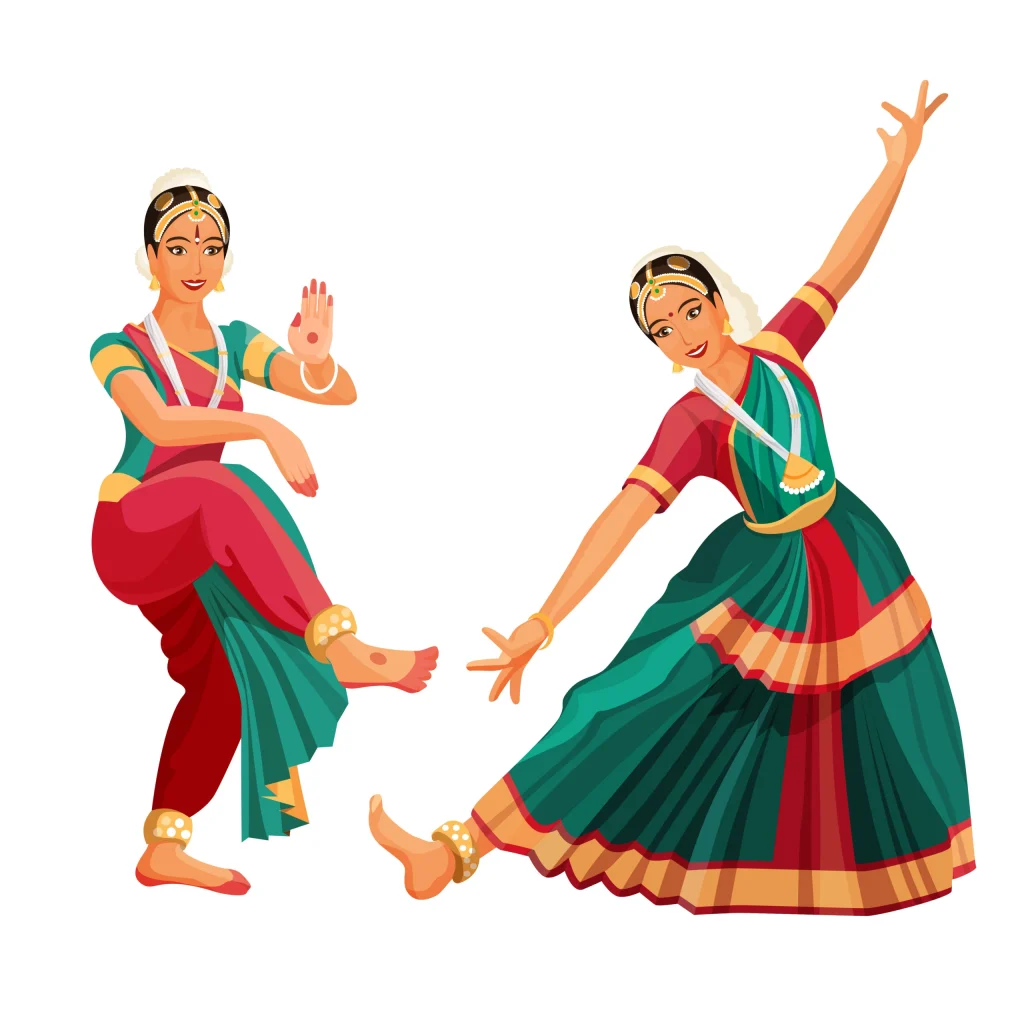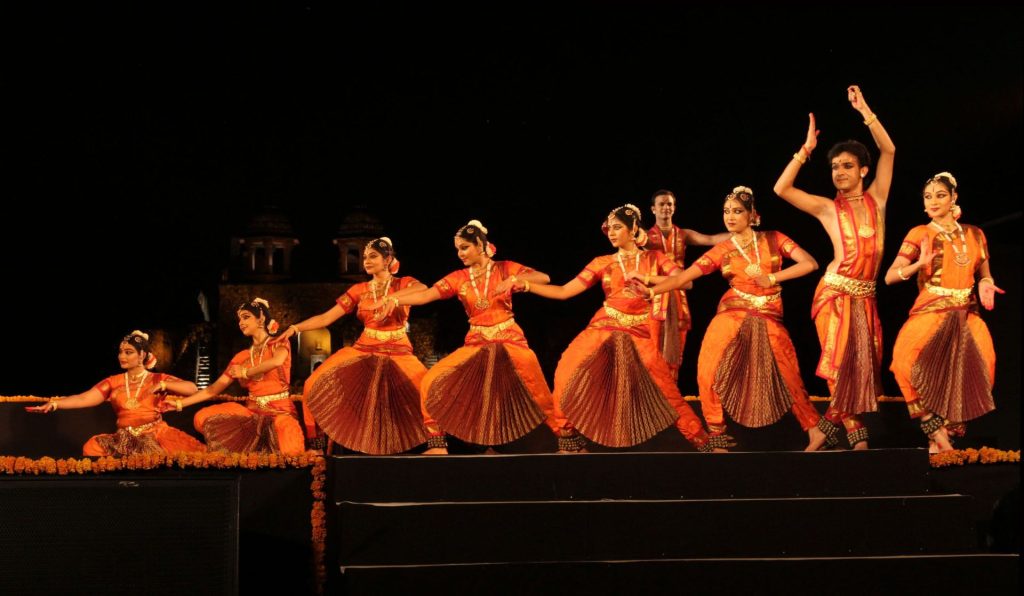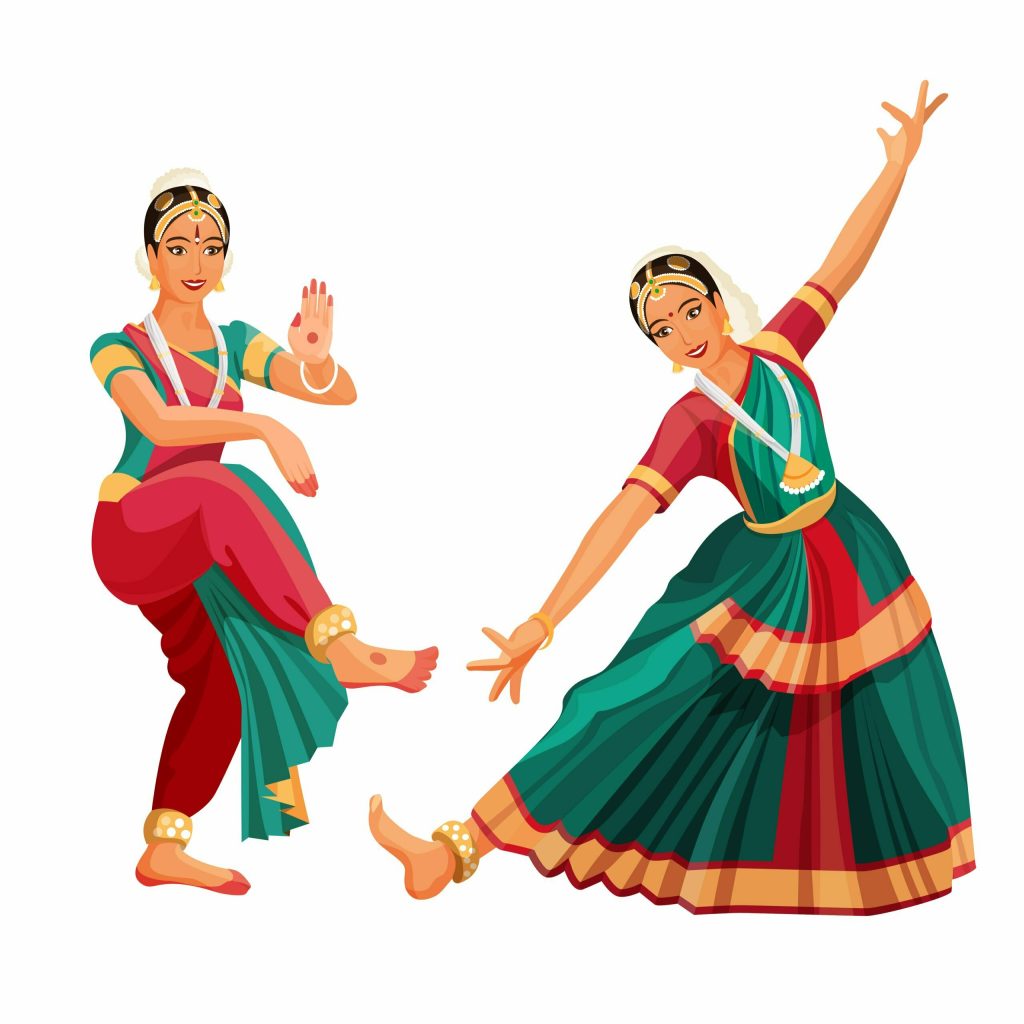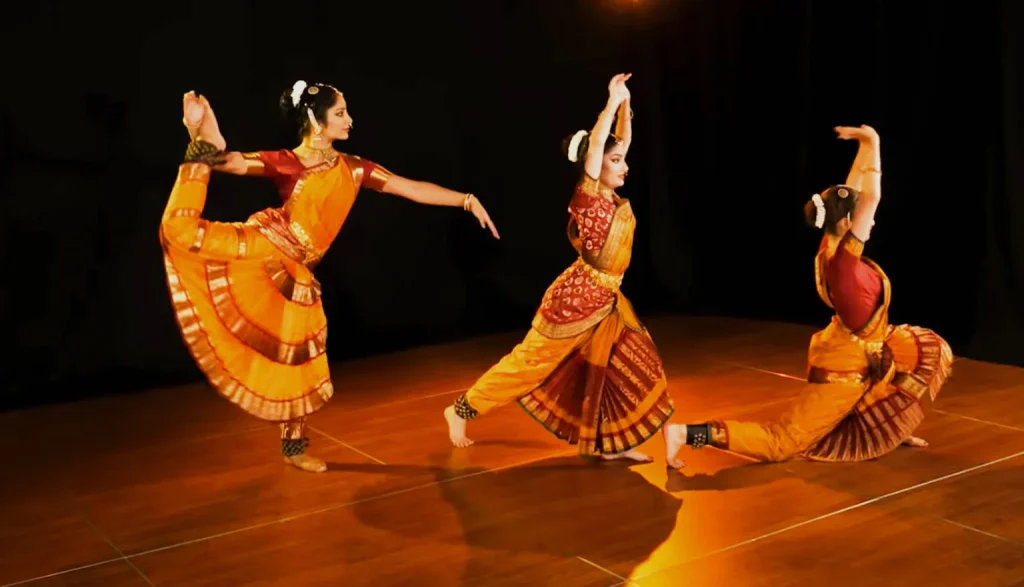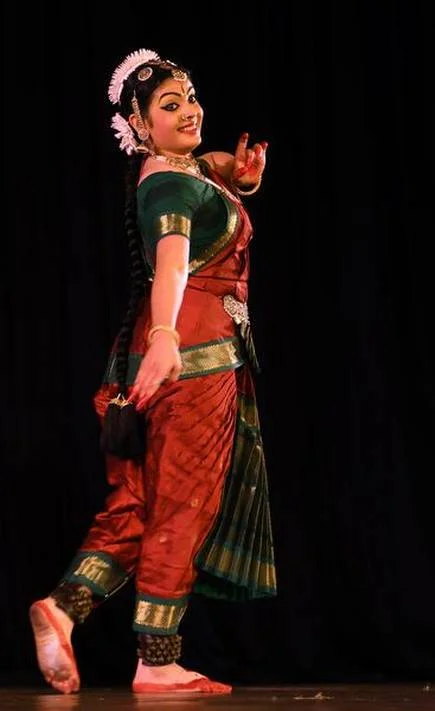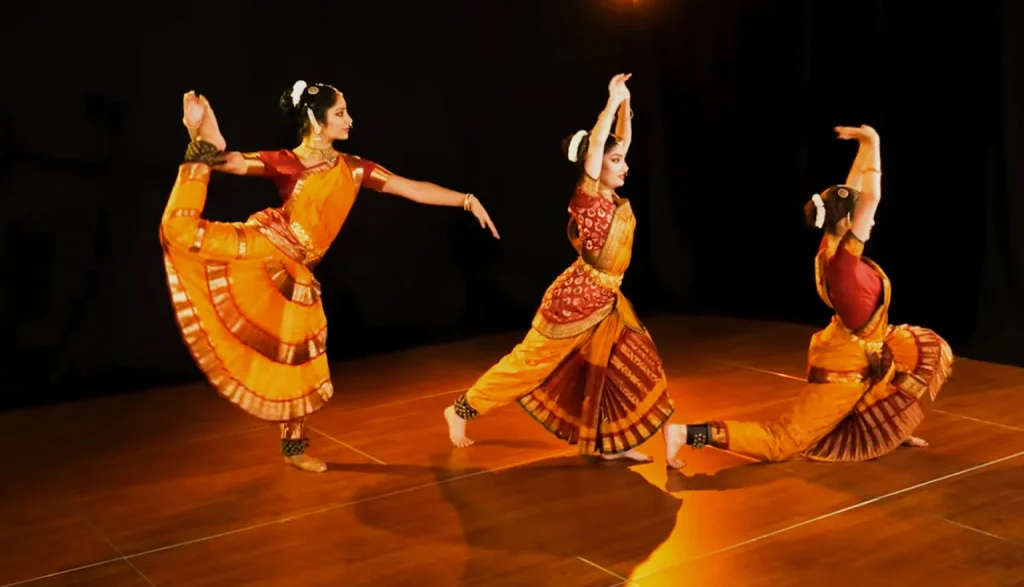Bharatanatyam is one of the major dance forms in the 8 classical dances of India. Bharatanatyam elements make it unique and provide beauty to the dance form. Learning of proper Bharatanatyam step is extremely necessary for learning this dance form. Proper posture along with the proper understanding and learning of steps of Bharatanatyam helps to make the dance look more graceful.
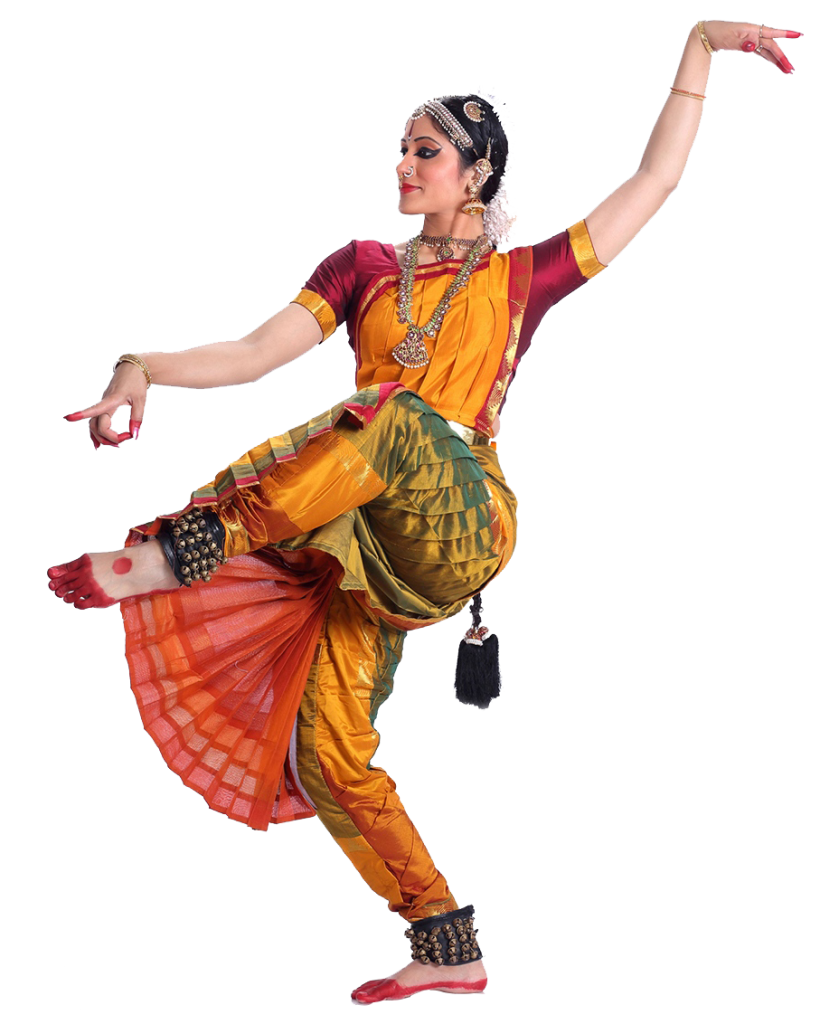
This exquisite dance form which has been derived from the ‘Natyashastras’ which is basically done with music as well as tala. Hence the Bharatanatyam steps should go with the proper rhythm.
Bharatanatyam Elements
Nritta in Bharatanatyam
Nritta is one of the first basic Bharatanatyam elements of Natya shastras and constitute of the purest dance form which is done in accordance with rhythm. The sole purpose of this dance form is to add to the beauty of the dance and help in creating the moods of the audiences. Nritta in Bharatanatyam is done through the proper learning of the Adavus.
Nritya in Bharatanatyam
Includes the depiction of various messages and emotions through dance form of Bharatanatyam. It also includes the art of miming along with the song in the dance form. It conveys various Hindu mythologies through the steps, gestures and movements in this dance form.
Natya in Bharatanatyam
The interpreting of the dance through drama or ‘Abhinaya’ which involves the inclusion of various steps of this dance form is known as Natya in Bharatanatyam. This includes depiction through the drama of especially the mythologies of Mahabharata, Ramayana and also the Krishnaleela.
Adavus – The basic Bharatanatyam dance moves
Adavus constitutes the primary dance moves in Bharatanatyam. Any classical dance form depends upon the Adavus of that dance form, especially in Indian Classical dance form. In Bharatanatyam, adavus form a very relevant component which needs to be learnt with great attention and intricacy. It is adopting the basic combination of movement of various parts of the body which is done according to the ‘tala’. It forms the main component in the learning of the Indian dance forms.
Adavus Constituents
The Adavus constitutes of the following:
- Sthanakas – leg and foot movement
- Mandalas – standing posture of the dancer
- Charis – it constitutes the body movements
- Hastas or the Mudras – which means the hand movements
The Adavus originated before 300-400 years back whereby the ancestor of the Tanjore Quartet had connections in the Sangita Saramrita by King Tulaja II. This can be traced back to Gangai Muttu nattuvangam. Similar to that of Bharatanatyam the Adavus also has a long history of development and a rich tradition to look back to.
There is a combination, the importance of the Adavus lies in the Angasuddha which means correct body posture, the Talashuddha which means the rhythm which is suited to the dance movements. There are multifarious rhythms of Tandava dance and also the slow dance form which involves a graceful representation of dance in Bharatanatyam. The imbibing of the basic rhythm differences and doing the steps according to them is what a dancer must learn in Bharatanatyam.
Please visit Bharatanatyam Adavus to learn all about advaus.
Three Speeds of Adavus
The adavus are performed in three speeds which are also known as the ‘kalams’.
These constitute of performing in the slow rhythm known as the ‘Bilambita laya’, the medium speed which is called the ‘Madhya laya’, the ‘druta laya’ or in a faster rhythm. These needs practice regularly. This is helpful in learning Bharatanatyam steps in a proper manner.
Aramandi – The Basic Bharatanatyam Posture
Most of the Bharatanatyam steps are performed in the half-sitting position whereby the knee portion of the dancer is bent a little to give a perfect shape for the other mudras and steps to be performed in this dance form.
In this position of the body posture, the feet remain apart on other sides forming a small amount of difference between both the legs. This step also makes the dance and the costume of the dance look more appealing and beautiful.
You should visit the following lesson to learn more about Bharatanatyam benefits.
Conclusion
Learning of the Bharatanatyam steps which are coupled with the expressions, tala, laya, mudras and music is extremely essential to give this dance form a complete look.
This is also physically enriching as it helps to make your leg muscles strong and is a good form of physical exercise. Learning of various Bharatanatyam step is needed to make this dance look more vibrant and graceful.
Share with your friends
